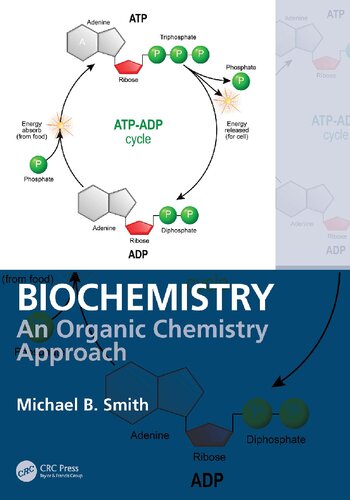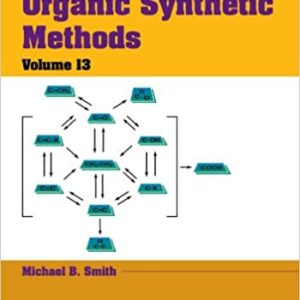Reactions in biochemistry can be described by an understanding of fundamental organic chemistry principles and reactions. This model is extended to myriad biomolecules and biochemical principles.
Biochemistry: An Organic Chemistry Approach, (PDF) offers a framework for understanding several topics of biochemistry, including the chemical behavior of biomolecules, enzyme activity, and more. It goes beyond just memorization. Using numerous techniques to develop a relational understanding, including homework, this ebook helps students fully understand and better associate the essential organic chemistry concepts with those concepts at the root of biochemistry. The aim is to better understand the fundamental principles of biochemistry.
Features:
- Provide a review chapter of fundamental organic chemistry principles and reactions.
- Discusses the organic synthesis and reactions of amino acids, nucleic acids, carbohydrates, and other biomolecules.
- Provides and explains the fundamental principles of biochemistry using principles and common reactions of organic chemistry.
- Discusses enzymes, proteins, lipids, vitamins, hormones, fatty acids, nucleic acids and other biomolecules by comparing and matching them with the organic chemistry reactions that make up the foundation of these classes of biomolecules.
Review
Explaining an interesting way to teach biochemistry, especially in union with organic chemistry, this ebook should find application at many schools. The first of 15 chapters is a review of the fundamentals of an organic chemistry course, but a complete course may be necessary for beginners to benefit from further study. Following discussion of organic reactions and mechanisms will be more important for students already familiar with organic chemistry basics. Chapter 2 defines acid-base chemistry, elimination reactions, and the importance of water in chemistry. Chapter 3 discusses nucleophilic substitution; chapter 4 describes free radical reactions. Subsequent chapters discuss, respectively, conjugated systems, dienes, sigmatropic rearrangements, enols and enolate reactions, enzymes, enzyme kinetics, carboxylic acid and derivatives, lipids, aromatic chemistry, organometallic compounds, heteroaromatic chemistry, biologically relevant metals, chelating reagents, amino acids, peptides, carbohydrates and derivatives, glycosides, proteins,nucleosides, nucleotides, RNA, and DNA. Every chapter concludes with homework questions; finally, chapter 16 includes the answers to the questions. Common abbreviations are listed at the beginning of the ebook, and several compounds and functional groups also have line formulas or partial structures shown. The ebook can be used by students and teachers of chemistry, and will be useful for all chemists as a review. — R. E. Buntrock, independent scholar
NOTE: The product only includes the ebook Biochemistry: An Organic Chemistry Approach in PDF. No access codes are included.











Reviews
There are no reviews yet.